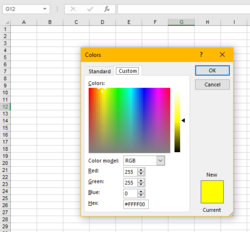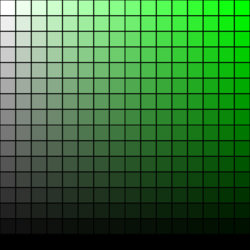I would like to have one or more A4 pages ready for print with all possible shades/nuances of yellow.
It would be nice small rectangles, each filled with one type of yellow, similar with Excel cells, but Excel does not provide so many variations of yellow.
My question is how can this be achieved in Photoshop.
The purpose is to calibrate the color scanned paper vs. color printed paper in order to match the colors.
I have noticed on internet many complicated explanations on this subject of color matching/calibration, but what I have in mind is next:
I do not know if that is smart or not or if it brings further color errors in the shades of yellow that I need to match but is the simplest thing that I can do with a non-professional LaserJet color printer.
You understand now the background why I need those A4 sheets with yellow variations or a technique how or generate them.
Any other suggestions are appreciated and welcome.
It would be nice small rectangles, each filled with one type of yellow, similar with Excel cells, but Excel does not provide so many variations of yellow.
My question is how can this be achieved in Photoshop.
The purpose is to calibrate the color scanned paper vs. color printed paper in order to match the colors.
I have noticed on internet many complicated explanations on this subject of color matching/calibration, but what I have in mind is next:
- The original color paper scanned in PC, Photoshop.
- Use a smartphone camera with a dedicated color recognition app to find the RGB values – as approx. values.
- Having one or more printed pages with a big variation of yellow (I am interested only in yellow) and use the same smartphone camera, at the same distance, light to get the same RGB values.
- Maybe it works also with a software in PC to compare the scanned original and the scanned printed paper with variations of yellow.
I do not know if that is smart or not or if it brings further color errors in the shades of yellow that I need to match but is the simplest thing that I can do with a non-professional LaserJet color printer.
You understand now the background why I need those A4 sheets with yellow variations or a technique how or generate them.
Any other suggestions are appreciated and welcome.



